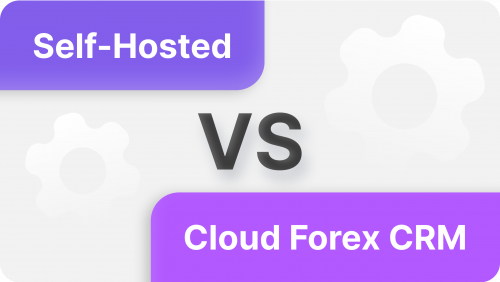How Do Liquidity Providers Work?

Financial liquidity is a crucial component of every market since it indicates the efficiency at which a financial product may be traded without depreciating in value. But there must be someone who ensures liquidity on the market.
In this article, we will explain liquidity, what a liquidity provider is, and how it works. Besides that, we will discuss what features a trustworthy liquidity provider offers as well as who are the best liquidity providers in the industry.
What Is Liquidity?
Basically, the extent to which a particular asset may be swiftly purchased or traded on the market at a rate representing its actual valuation is referred to as liquidity. Due to its ease, speed of conversion into other assets, and global acceptance, cash is regarded as the most liquid asset.
When a financial asset could be quickly and easily changed into cash without depreciating in value, it is referred to as having sufficient financial liquidity. Besides cash, foreign currency (FX), cryptocurrencies, or stocks are among the most liquid assets.
Cash doesn't need to be converted or sold because it already "is the cash." Depending on the value of the investment, stocks and bonds may usually be exchanged for cash within 1-2 days. It may take considerably longer to convert assets that are harder to sell, such as real estate, fine art, and privately held enterprises into cash, so those are examples of goods that are all illiquid.
Now, let's move to the core of this article and discuss liquidity providers.
Different types of market participants offer liquidity to the market. They include significant enterprises, hedge funds, Forex brokers, central banks, important commercial and investment financial institutions, and individuals with vast capital, also known as "whales".
A liquidity provider's primary responsibility is to boost transaction volume and reduce market volatility. It is possible thanks to all the collected funds, and a continuous flow between supply and demand, which is constantly maintained. Since liquidity providers have connections to the major brokerages and financial institutions globally, they may offer the best buy and sell prices, leading to attractive spreads for traders.
Tier 1 liquidity providers are the most significant investment banks with a wide range of services they provide to their customers. They offer the smallest spreads and numerous trading options compared to other liquidity providers. Individual traders, however, are unable to have direct access to Tier 1 providers. The most common method of entry is through a broker that has connections to one or more Tier 1 liquidity providers that are used to fulfill their orders. That said, Tier 1 providers only collaborate with partners with vast capital to reduce risks.
How Do Liquidity Providers Work?
To complete transactions, Forex brokers often use an Electronic Communications Network/Straight Through Processing (ECN/STP) network. The transactions of other parties are delivered straight to a Tier 1 or additional liquidity provider when brokers run a No Dealing Desk (NDD) model. In this situation, the broker assumes the opposing side of the deal and offloads elevated risk to the necessary counterparties. Also, brokers may employ a market-maker model.
It's important to note that specific traders avoid working with market-maker brokers. This is because the market maker takes the opposite side of the customer's transaction and stands to gain financially if the client loses money. By using an ECN/STP broker, the trader may be sure that a Tier 1 liquidity provider is carrying out the transaction and that the Forex broker is not taking part in any way. Brokers are capable of offering their customers the most acceptable deal this way.
What Features Should A Trustworthy Liquidity Provider Have?
The main features that every serious liquidity supplier should have are described below.
Diversified trading instruments
Nowadays, almost every brokerage firm is somehow involved in the Forex market. However, modern trading systems provide brokers access to a broader range of marketplaces. They can offer crypto CFDs, metals or commodities, and other asset classes. A brokerage should work with a liquidity provider that manages various assets since it is becoming more popular for many brokers to offer more financial instruments in addition to foreign currencies.
It is highly recommended to work with PoP liquidity providers who deliver the broadest liquidity pools for every asset.
Regulation and compliance
Every solid LP should be in compliance with all applicable regulations and make that information publicly available. Working with unauthorized liquidity providers is always risky. Additionally, it is important to confirm the regulatory body's credibility. It is recommended that the FX liquidity supplier is a publicly traded company, as you should have access to every report, the possible partner's financial status, and other important conditions of the its activities.
Possibilities for trading
Multiple liquidity providers may bring different trading possibilities in terms of processor speed, leveraging capabilities, amount of trading tools, and so on. Exploring each of these sectors is highly recommended to discover a certain supplier's benefits.
Trade execution efficiency and durability
To collaborate with a reliable source of liquidity, LPs should prioritize precise execution and provide complete post-trade clarity. The operational system should be comprehensive, particularly during market data announcements that might lead to unforeseen circumstances on the market. You should be able to actively monitor transaction execution utilizing automated trading software or an app that allows you to gather comprehensive information.
B2Prime
B2Broker, a prominent technology and liquidity provider in the Forex/CFDs and cryptocurrency industry, has a global presence in the tightly regulated environment thanks to its vital product - B2Prime, a Cyprus-based financial institution licensed and monitored by the CySEC.
B2Prime is a regulated global Prime of Prime (PoP) multi-asset liquidity provider that caters to both professional and retail customers in the global markets. Its main investment products are leveraged derivative CFDs (Forex, metals, commodities, indices, and cryptocurrencies).
CySEC, Cyprus' financial regulator, presents a regulatory environment within which licensed financial services businesses should work. B2Prime is obliged by the strict financial market regulatory norms as a CySEC-regulated broker, including capital adequacy requirements, customer money segregation, and corporate operations transparency.
With the B2Prime approval by CySEC, it is now possible to provide institutional-grade liquidity to customers in over 30 countries. All clients will benefit from greater security, knowing they are supported by a world-leading, multi-regulated technology and liquidity provider.
Furthermore, B2Prime can connect brokers with more than 115 Forex pairs, 22 crypto CFD pairs, spot metals, indices, and spot energies through the OneZero, MT5, and PrimeXM platforms.
Bottom Line
Trading liquid assets might help make solid profits, but you must first understand the market you intend to enter. In order to stay aware of the factors determining each market's volatility and liquidity and to make profitable purchases as a result, you need also pay close attention to the financial events.
It is safer for everyone involved to start with the asset classes with the higher liquidity (Forex, crypto), since investing in assets with them is faster and more rewarding than dealing with illiquid asset classes (real estate, art).
B2Prime, a multi-asset liquidity provider, is the top-quality solution that can help enhance your business thanks to its robust technology, and reliable services, mainly thanks to CySEC regulations and global recognition.


